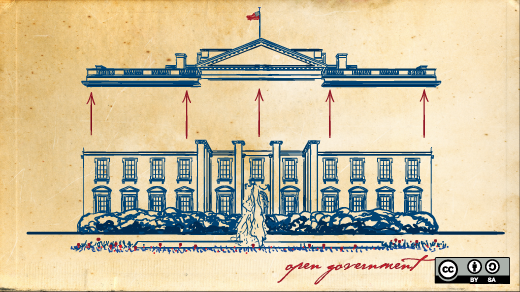After 'version 1.0' of the US Constitution was released to the public on Sept 17, 1787 there was remaining discontent among several states regarding the powers assigned to the new Federal government and a lack of protections for fundamental individual freedoms and civil rights.
To fix this bug, the First Continental Congress voted on twelve Constitutional Amendments in September of 1789. Two of them failed to gain enough support and the remaining ten, collectively known as The Bill of Rights, were included in 'version 2.0' of the US Constitution, released in 1791.
This refactoring process was open source-minded on multiple levels.
First, the voice of the people (the community) was heard when expressing concern about defects (bugs) in the Constitution. In this case, the bugs related to the lack of sufficient protection for individual civil rights. There was no presumption of perfection or completeness in the US Constitution, and there was a will to improve it and make it better through an open political process.
Second, changes were proposed, discussed, and finally implemented. The discussion of these amendments is equivalent to code reviews that a typical open source software project will go through when adopting substantial changes. Note: the amendements were adopted without having to "fork" the project (the country), though later the country was deeply divided, resulting in the American Civil War in 1861.
Submitting patches / admendements
James Madison, one of the "main developers" of the US Constitution, championed the amendments (or, patches) as they went through the review process. Of great interest to the open source philosophy and movement are the changes in the First "Patch":
Congress shall make no law respecting an establishment of religion, or prohibiting the free exercise thereof; or abridging the freedom of speech, or of the press; or the right of the people peaceably to assemble, and to petition the Government for a redress of grievances...
Exercising freedom of speech is a fundamental characteristic of the daily operation of open source communities, where information flows through agile communication channels uncensored. Controvertial sometimes, yes; but not censored. This flow of information ensures that decisions are made based on a clear understanding of the situation at hand, and not driven by misrepresentation nor spinned agendas.
The freedom to assemble is as well at the center of how individual members come together in virtual groups to work on activities of common interests. This free association enables the economic efficiency that results when individuals self-select the tasks that they are interested, motivated, and qualified to work on.
As code and law, and community and society, come closer together, taking a fresh look at the history that led us here, sheds a bright light on how we can continue to work together, and how open source principles can continue to change the world for the better.
Read: America's Constitution - A Biography, by Akhil Reed Amar







2 Comments